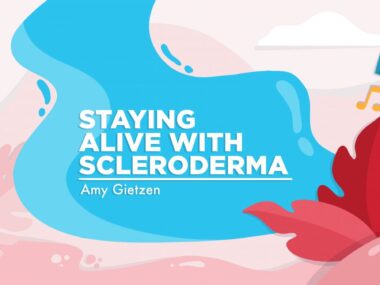Conversation, activities reduced SSc patients’ loneliness in pandemic
775 participants from SPIN were asked to complete UCLA Loneliness Scale-6
Written by |

More conversations, either one on one or in groups via telephone or virtually, along with in-person household activities and conversations, were significantly associated with less loneliness during the COVID-19 pandemic among people with systemic sclerosis (SSc), a study indicates.
Conversations and activities at the beginning of the pandemic didn’t predict loneliness over the following two years, however.
The findings suggest “sustained levels of interactions over time were potentially more useful than levels of interactions when the pandemic began,” the researchers wrote in “Moderators of Loneliness Trajectories in People with Systemic Sclerosis During the COVID-19 Pandemic: A SPIN COVID-19 Cohort Longitudinal Study,” which was published in the International Journal of Behavioral Medicine.
SSc, or scleroderma, is an autoimmune disorder that affects connective tissue, damaging the skin and possibly the internal organs, including the heart and blood vessels, lungs, stomach, and kidneys.
During the COVID-19 pandemic, people with SSc had a higher risk of disease and death due to compromised lung function, overall poor health, and the use of immunosuppressant medications. As a result, many faced long periods of isolation, which may have been worsened by physical limitations, such as fatigue and chronic pain. Such isolation may have induced feelings of loneliness, an unpleasant emotional response often associated with a perceived lack of social relationships that fails to fulfill social needs.
Limiting loneliness
A team led by researchers at San Diego State University, California, evaluated factors that may have influenced loneliness in people with SSc during COVID-19. A total of 775 participants were recruited from the SPIN cohort, a group of SSc patients from seven countries who regularly complete online assessments. Their mean age was 55.6, 638 (83%) were white and 697 (90%) were women. The limited subtype occurred in 407 patients, while 315 had the diffuse subtype.
The participants were asked to complete the UCLA Loneliness Scale-6 (ULS-6) — a questionnaire to assess subjective feelings of loneliness and social isolation — at 30 points between April 2020 and May 2022. Higher scores indicated a higher degree of perceived loneliness.
At each assessment, they were asked to report the number of one-on-one virtual or telephone conversations and virtual group conversations in the past week. They also reported the hours spent enjoying in-person household conversations and household activities.
At the study’s start (baseline), more virtual group conversations and more hours with in-person household activities, correlated with less loneliness. Baseline scores didn’t significantly predict loneliness trajectories throughout the pandemic, however.
During the pandemic, a higher mean number of one-on-one virtual or telephone conversations and virtual group conversations, along with in-person household activities and conversations, were significantly associated with less loneliness over time.
For every additional virtual group conversation, there was a 0.4-point decrease in loneliness scores over time compared with a 0.34 decrease for every additional hour spent with household activities. Every additional hour spent enjoying in-person household conversations led to a 0.3 decrease in loneliness over time, and a 0.11 decrease for every additional one-on-one virtual or telephone conversation.
Neither marital status nor number of household members were associated with baseline loneliness or changes in loneliness over time, which surprised the researchers.
Satisfaction with the quality of in-person household conversations in the past week was assessed on a scale of 0 (very dissatisfied) to 4 (very satisfied). For every additional 1 point increase in mean satisfaction, there was a 1.03-point decrease in loneliness over time.
A subgroup analysis of 269 (35%) patients who completed at least 75% of the 30 assessments confirmed the same pattern as the original analyses, except for the number of virtual group conversations. This demonstrated “a need for further investigation of these effects in future studies,” the researchers wrote. “While present study findings demonstrated that baseline values reflecting frequency of conversations and activities, and satisfaction with conversations, were not predictive of loneliness trajectories, higher values averaged across time did predict trajectories of decreasing loneliness.”





